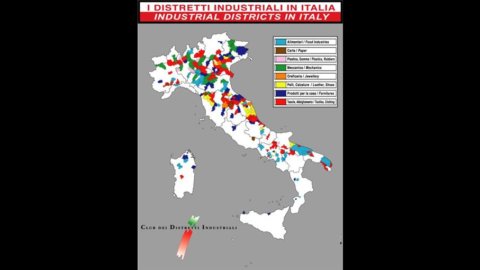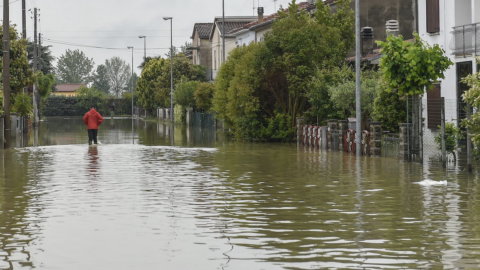In the first quarter of 2015, exports from Italian industrial districts amounted to 22 billion euros, 3% more than in the corresponding period of the previous year (+646,8 million euros). This is the 21st consecutive quarter of growth. The trade surplus of the district territories rose to 14,2 billion euros, 73% of the overall surplus of Italian manufacturing.
The districts are therefore confirmed as areas with high added value and central to the Italian productive fabric. Was largely beat the German competition, which in the sectors of specialization of the districts suffered a drop in foreign sales of -0,4%. The agro-food districts (+7,1% vs. -4,1% for Germany), furniture (+7% vs. +1,7%), building products and materials ( +3,3% vs. +0,6%) and fashion (+3,3% vs. +0,2%). Among the main new elements of the first quarter of 2015 is the acceleration of exports of the agro-food districts and the furniture industry.
Among the former, the results of some areas of the South stand out (Bari fruit and vegetables and Nocera preserves) and some wine districts (Chianti and Conegliano-Valdobbiandene Prosecco). Among the latter, the main Italian furniture districts stood out, the Livenza and Quartier del Piave and the wood-furnishings of Brianza, which managed to compensate for the difficulties encountered in Russia with success in the United Kingdom, in the United States and Switzerland and with the entry into the Chinese market. Italian industry has continued to grow even in sectors with a high technological intensity: if we exclude aeronautics, in fact, the technological hubs we monitored recorded a trend increase of 3,7% in the first quarter of 2015.
In particular, the biomedical poles stand out (+21,1%), driven by the leap of Mirandola which closed with an increase of 48,3%: the exports of the Mirandola pole rose from 65 million euros in the first quarter 2014 to the current 96 million euros, highlighting a sustained development trend in all the most important markets, France and Germany in primis. This is the all-time high never reached before. The effects of the earthquake that had severely hit this area in 2012 were therefore brilliantly overcome. Another important novelty of the first part of the year is the recovery of the districts of the South which, thanks also to their agro-food specialization, have returned to grow more than the rest of Italy. In particular, Puglia and Campania are the two regions that have done best in Italy, recording progress of around 10% in the first quarter of 2015. Signs of acceleration then emerged in Veneto (+8,6%), where some agro-food districts, the furniture sector of Livenza and Quartier del Piave and various important districts of the fashion system stood out.
Among these, the textile and clothing industries of Treviso, the eyewear industry of Belluno, the goldsmith industry of Vicenza, the tanning industry of Arzignano stand out, which in the first quarter of the year ranked among the top ten Italian districts for growth in exports in terms of value absolute. District exports increased despite the new stop in sales in Germany and France (the two main district outlets) and the new collapse of exports to Ukraine and Russia (-234 million euros in the first quarter of 2015 compared to the already low levels of last year). The difficulties encountered in these markets have been overcome thanks to the extraordinary ability of the district territories to quickly review their geographical specialization. The United States confirmed itself as the main engine of district growth: on this market, in the first three months of 2015, district exports rose to 1,9 billion euros, 315 million more than in the corresponding period of 2014 (+19,5 .646,8%). This is an important figure, especially if one considers that the overall growth in exports of the districts in the same period of time amounted to XNUMX million euros.
Attachments: District Monitor_July 2015.pdf





